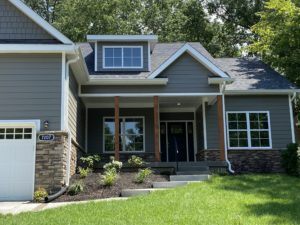Repairing an older home can be an invigorating and satisfying project. It allows homeowners to breathe new life into a property with a rich history and distinctive architectural features. However, striking a balance between preserving the home’s unique charm and incorporating contemporary elements can be a subtle task. In this article, we will discover key considerations and practical tips for renovating an older home, ensuring that its timeless charm shines through while embracing modern aesthetics and functionality.

Before plunging into modern updates, take the time to appreciate and apprehend the unique charisma of your older home. Pinpoint its architectural style, historical significance, and notable features. This appreciation will guide your renovation decisions and help preserve the original character that makes the house exceptional.
Older homes may require fundamental evaluations to ensure constancy and safety. Consult with a professional contractor or architect to assess the foundation, load-bearing walls, and overall structural integrity. Address any essential repairs or alterations before proceeding with cosmetic updates.
Preserving and restoring key architectural elements can significantly improve the character of an older home. Elements like original moldings, hardwood floors, fireplaces, and decorative trim are often worth preserving. Repair and reinstate these features to their former glory, highlighting their beauty and historical significance.
Effective renovations strike a harmonious balance between the old and the new. Blend modern design elements with the existing architecture to create a cohesive aesthetic. For example, installing contemporary light fixtures in a room with ornate crown moldings can create a captivating contrast.
While preserving the home’s charm, it’s essential to upgrade its functionality to meet new standards. Modernize electrical and plumbing systems, install efficient heating and cooling systems, and consider open floor plans that facilitate better flow and natural light. These updates enhance livability without compromising the home’s character.
When selecting materials, opt for options that complement the home’s original style. For example, choose hardwood flooring that matches the era or consider tile patterns reminiscent of the period. Integrating reclaimed or salvaged materials can add authenticity while reducing environmental impact.
Introduce up-to-date amenities discreetly to enhance the comfort and convenience of your older home. Consider integrating smart home technology, energy-efficient appliances, and updated lighting systems. Conceal wiring and other modern installations to maintain the home’s historic charm.
Renovating an older home can be intricate, requiring specialized knowledge and expertise. Consult with architects, designers, or experienced contractors who have a proven track record with historic renovations. Their insights can help you make informed decisions while ensuring compliance with local preservation regulations, if applicable.
Renovating an older home is a labor of love that allows you to preserve its unique charm while incorporating modern touches. By cautiously balancing the preservation of original features with modern upgrades, you can create a home that seamlessly balances the best of both worlds. Remember to hold the character of your older home, retain its architectural elements, and make thoughtful choices to enhance functionality and aesthetics. With careful planning and professional guidance, your renovated home will stand as a testament to the past while embracing the conveniences of the present.

